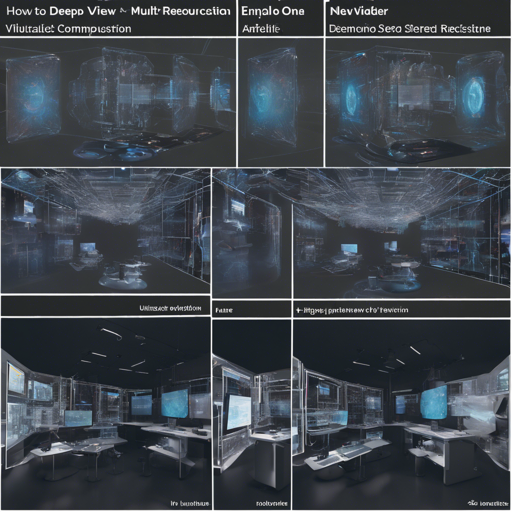Welcome to the world of DeepVideoMVS, a brilliant framework for depth prediction from video streams using multi-view stereo techniques. In this article, we will guide you through the steps required to get started with DeepVideoMVS, including installation, data structure setup, training, testing, and troubleshooting tips.
Overview of DeepVideoMVS
DeepVideoMVS harnesses the power of recurrent spatio-temporal fusion to achieve highly accurate depth maps with real-time performance and low memory consumption. Imagine trying to piece together a jigsaw puzzle (the video), where each frame (piece) captures a different angle of a scene, and you have to seamlessly assemble them into a coherent whole (depth map). This approach builds on previous time steps, propagating geometry information like stacking building blocks to create a stable structure.
Installation Steps
To get started with DeepVideoMVS, you will first need to set up your environmental dependencies. Here are the steps:
- Create a new conda environment:
conda create -n dvmvs-envconda activate dvmvs-envconda install -y -c conda-forge -c pytorch -c fvcore -c pytorch3d python=3.8 pytorch=1.5.1 torchvision=0.6.1 cudatoolkit=10.2 opencv=4.4.0 tqdm=4.50.2 scipy=1.5.2 fvcore=0.1.2 pytorch3d=0.2.5pip install pytools==2020.4 kornia==0.3.2 path==15.0.0 protobuf==3.13.0 tensorboardx==2.1git clone https://github.com/ardaduz/deep-video-mvs.gitpip install -e deep-video-mvsUnderstanding the Data Structure
Setting up the right data structure is essential for DeepVideoMVS to work effectively. It’s like organizing your tools before tackling a project. Here’s how to structure your dataset:
- images: Input images are stored here. Naming is not crucial, but sequential order must be maintained.
- depth: Contains ground-truth depth maps that must match color images in names, stored in uint16 PNG format.
- poses.txt: This file includes the CAMERA-TO-WORLD poses for each image.
- K.txt: The intrinsic matrix for the sequence should be included as well.
Note that during training, each scene must be in a separate folder with color and depth images zipped as .npz files. For a comprehensive guide, refer to the scripts in the dataset folder.
Training Your Model
Once your environment is set up and your data is structured correctly, it’s time to train your model. Just like fine-tuning a musical instrument, this requires precision:
- Change into the relevant directory:
cd deep-video-mvs/dvmvs/pairnetpython run-training.pycd ../fusionnetpython run-training.pyTesting Your Model
With a trained model, you can now test it in two distinct ways:
- Bulk Testing: Use the script to evaluate multiple datasets at once:
python run-testing.pypython run-testing-online.pyTroubleshooting Tips
Despite the robustness of DeepVideoMVS, you may encounter challenges. Here are some troubleshooting ideas:
- Ensure that the data structure is correctly set up as described to avoid runtime errors.
- Review the
config.pyfile for any incorrect paths or parameters. - If you face memory issues, consider reducing batch sizes or using a machine with higher specifications.
- Stay updated with the latest improvements or bug fixes in the repository by checking the GitHub repository.
- For further insights, updates, or to collaborate on AI development projects, stay connected with fxis.ai.
At fxis.ai, we believe that such advancements are crucial for the future of AI, as they enable more comprehensive and effective solutions. Our team is continually exploring new methodologies to push the envelope in artificial intelligence, ensuring that our clients benefit from the latest technological innovations.
Conclusion
DeepVideoMVS offers a compelling method for achieving accurate depth maps in real-time applications. By following this guide, you should be well on your way to mastering this innovative tool. Happy coding!

